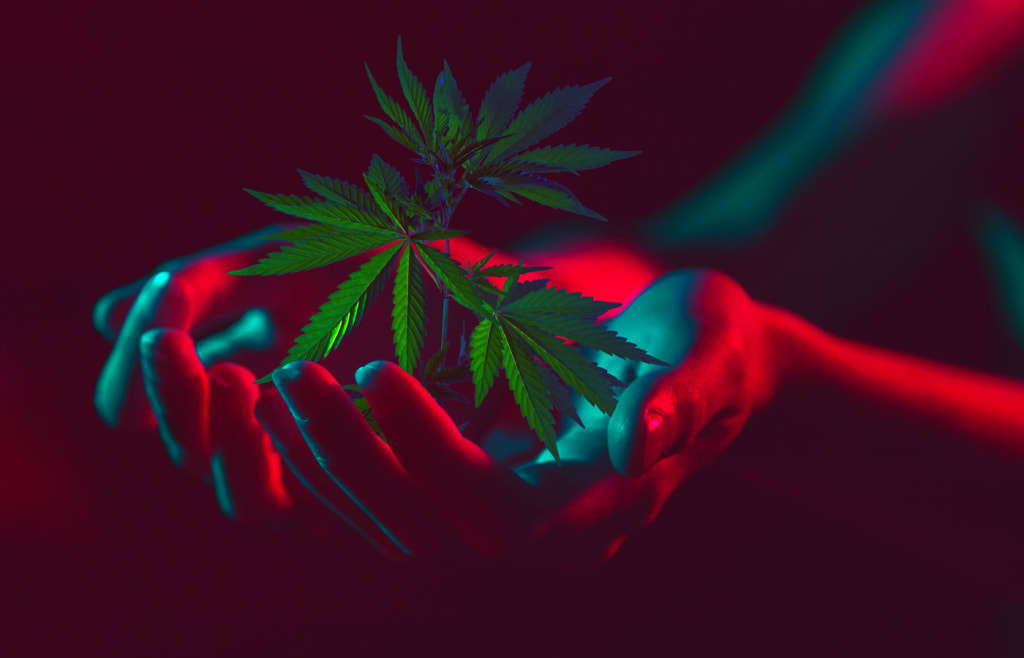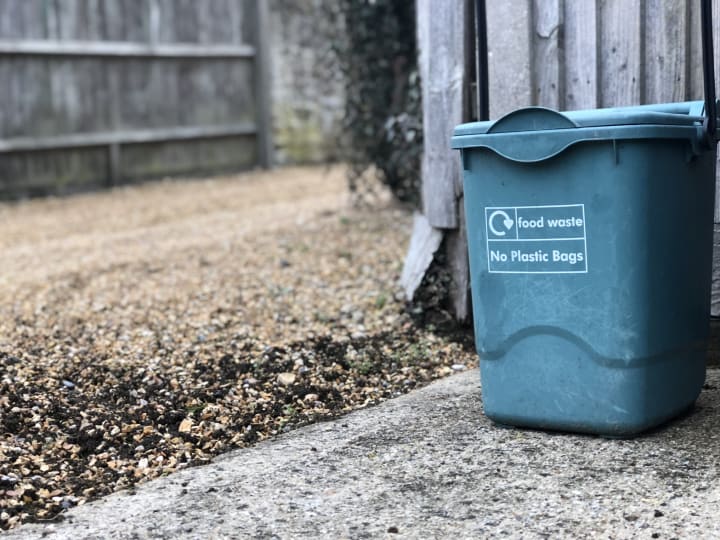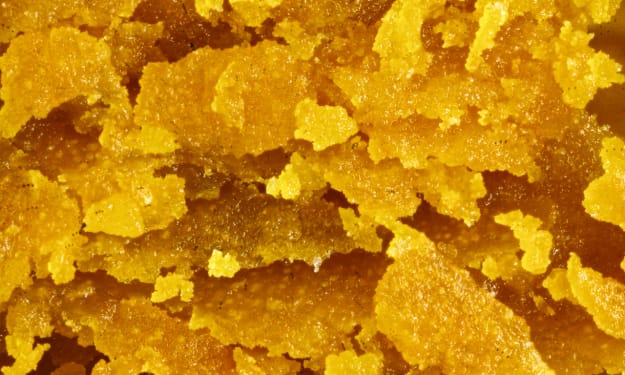Learn How To Grow Organic Cannabis
Once you know how to grow organic cannabis, you're one step closer to cultivating the most bodacious bud you've ever seen.

Anyone can grow organic cannabis, but only if you're willing to follow the rules. Cultivating marijuana isn't like growing tomatoes or green peppers. You have to pamper pot plants, keep them free from chemicals, and spoil them with their own unique soils, fertilizers, composts, and pesticides if you want organic yields.
Become familiar with the bud.

Image via Unsplash
You don't necessarily have to know the life cycle of the marijuana plant to grow organic cannabis, but you really ought to learn about it. You may think you know the basic gist of it all because all plants are more or less the same, right? Growing cannabis takes a careful, knowledgeable touch. You need two green thumbs, particularly if you're interested in growing organic marijuana. You can check out marijuana grow books on Amazon. The seeds are stubborn. Getting them to germinate successfully is half the battle, and from there, you still have to coax the seedling to grow. Cannabis seeds are notoriously stubborn. You're more or less good to go once your seeds reach the vegetative state on their own. As they flower and reach maturity, you can harvest seeds for the next round—hopefully.
To get past the planting point, it's imperative that you baby your marijuana seeds. When you follow the plant's natural cycle, while simultaneously giving the seeds the nutrients they need, then the growing process isn't as complicated. It's still a time-consuming endeavor, but you get back just as much as you put into it, if not more.
Inside or Outside?
You can grow organic cannabis inside or outside. It's actually a bit easier outside, particularly when you take the natural stance. Growing indoors isn't impossible, but it does tend to take more time and care; there is a lot of good indoor marijuana growing advice out there though. This is also why reading up on the life cycle of the plant is vital. Sprouting seeds and seedlings prefer the dark for much of the day. Outside, you need to find an extremely shady spot, or else you can set up your operation in a shed or greenhouse where you can control the light.
The good news is that you don't have to focus on the location right away. Think about it, test your soil and the lighting outside, and look around inside your home or wherever you intend to grow to ensure that you have space where the seedlings will thrive. As you consider this aspect of cannabis cultivation, you can get a jump start on your compost, fertilizer, and soil. More than anything else, those are the components that will make your cannabis plants thrive. If all else fails, there are marijuana grow kits you can buy on Amazon too.
Create your own compost to grow organic cannabis.

Image via Unsplash
To grow organic cannabis, you need organic compost. The best way to guarantee that you're supplying your plants with organic nutrients is to create your own compost. That way, you know yourself that the compost contains living soil. Organic cannabis, like any other organic fruit, vegetable, or plant, requires living soil filled with the things you usually cast off and throw out—but now you need to save those things.
You can start a compost pile anyway. The best option, however, is to find a corner of the yard that isn't downwind from the house and place a trash can or bucket there. That's where you'll collect all your leavings. The compost is necessary whether you grow cannabis indoors or outdoors. Here's an excellent recipe for a super soil mix, but bear in mind that you may need more or less of the “ingredients,” depending on how many plants you intend to grow:
- Materials that are rich in carbon, including pine needles, dead leaves, trimmings from plants and trees, grass clippings, and straw
- Materials that are rich in nitrogen, such as coffee grounds, peels from fruit and vegetables, organic manure, and seaweed
- Rock phosphate
- Trace elements of Azomite
- Coco fiber
- Epsom salts
- Mycorrhizae
- Dolomite (sweet lime)
- Steamed bone meal
- Blood meal
- 1 kg of bat guano (certain types of seabird guano work, as well)
- 1 teaspoon of humic acid, powdered
- Molasses
- A bottle of pH Down
- A bottle of pH Up
You aren't limited with regards to when you make your compost. Keep it going all year long. If you plan to grow year round, then you need an excess, anyway. The only time you may need to change your routine is during fall, winter, or early spring. As the temperatures drop, you may want to move your containers into a slightly warmer spot.
Don't just leave the compost to its own devices. The composting process lasts for 2-5 months, during which time you're also responsible for turning the soil. To make the process easier and faster, splurge on composting bins that turn the mixture by themselves.
Make DIY fertilizer.
Your base soil is just the first thing you need to grow organic cannabis. You see, you also have to fertilize the soil and—you guessed it—you're better off with the DIY approach here, too. Buy a tarp or one of those kiddie pools made of plastic, and spread out your composted soil. You start with the base soil you made with the ingredients above. On top of that, spread out the following mixture using the ingredients you've collected:
- .75 kg of rock phosphate
- 1/8 of a cup of Epsom salts
- ¼ of a cup of Azomite
- ½ cup of the sweet lime
- 1 teaspoon of humic acid, powdered
On top of that, layer some more of your soil. Next up, shovel on the bat guano, then cover it with more soil. The blood meal and bone meal compose the next layer, liberally mixed with the base dirt. Once you complete the final layer, use your shovel to turn the mixture and combine everything. At this point, you can place the enriched soil into big bins, along with about 10 liters of water.
Leave time for “fermentation.”

Image via Unsplash
Cannabis growers understand patience. You just have to wait for your mixed soils to “ferment” into the perfect grow mediums. Once you've packed your bins with water, compost, and fertilizer, pull them into a spot with plenty of sunlight and just wait. They need to sit for about 30 days for the fungi and microorganisms to make the soil rich and fertile.
Learn about compost teas.
In between fertilizer feedings, you can supplement with compost teas. They will help you to grow plants with a potent yield. Consider this a more natural form of Miracle-Gro. You cannot use chemicals to grow organic marijuana, not even for supplemental feedings.
Fill a large bucket with clean water that's been filtered, then use a bubbler to oxygenate and enrich the water. Get a cotton bag or a sheet of cheesecloth and fill it with your compost, some guano, and a dollop or two of molasses, then steep the cloth in the water for two or three days. Afterward, water the leaves and the roots of your plants with the “tea.”
Research pest control—the organic way.

Image via Unsplash
To grow any organic produce, you can't use chemicals to keep pests at bay, either. Fortunately, there are several safe, natural options for pest control. Your enriched soil is something of a deterrent. In case it's not enough, put together a mixture of pressed garlic, lavender oil, anise, cloves, juice from hot peppers, and filtered water. Stick it in a spray bottle and spritz the plants as needed.
Get to know your garden store.
Home and garden stores have organic products that can help you. Not everyone has the time to devote to making their own compost, fertilizer, and pesticides. Smaller, locally owned garden shops are usually the best place to find healthy alternatives. Just get to know the folks who work there, even if you don't reveal what you want to grow.
Start a grow journal.

Image via Unsplash
Writing in a grow journal has several benefits. Keeping up with your failures as well as your successes is critical so that you can figure out what works and what doesn't. Include ingredients lists for your soil and fertilizer, new tea recipes, and planting schedules, not to mention information about the individual plants themselves.
Put together a helpful network of growers.
Cannabis growers stick together. Going organic is tricky, so you may need help. Seek out a circle of growers who can share tips and give you advice. To successfully grow organic cannabis, you have to be on-point with soil, pH levels, and quality seeds. Get help.
Do you want to grow organic cannabis? Are you ready to invest the time? Maybe you can start collecting your growing tips now.
About the Creator
Johnny Hash
Born in Kingsland, Arkansas. Spent way too much time watching TV. Daily toker. Still in Kingsland, Arkansas.






Comments
There are no comments for this story
Be the first to respond and start the conversation.